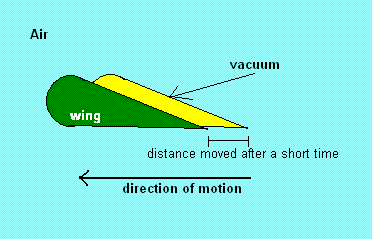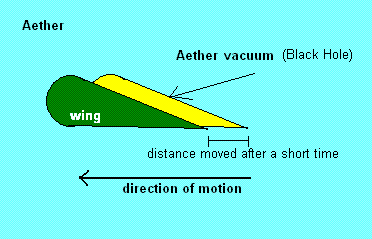I was trying to figure out how planes stay in the sky.
So this is what I came up with.
 |
As the plane moves forward, a small vacuum is created above the wing. The vacuum is a low pressure zone which pulls the wing up and the air down to fill itself in (because Nature HATES a vacuum). This upward pull that the low pressure zone creates we call lift.
I thought, “Hooray. This isn’t so complicated! Planes stay up because they create small vacuums above their wings as they move forward, creating an upward force.”
Then I thought, “And this is why planes can’t fly in outer space, because there is no air to displace and create a vacuum.”
Then I thought, “But if there is an aether theory, why not?”
 |
So as a wing moves through a vacuum, generally we don’t think there is anything to cause lift or drag. But if we have an aether theory of a vacuum, i.e. there is some substance below what we can observe that our matter exists within, then why can’t we create a vacuum in that substance?
My line of thought was: Air is to Vacuum as Vacuum is to Black Hole.
Can’t we just spin a propeller fast enough in outer space to create lift? As the prop turns small vacuums in the aether will be created, and, insofar as Nature hates vacuums, a force will be created to fill in this vacuum, pulling the propeller in that direction.
(Someone please tell me how this is nonsense so I won’t go around thinking I’ve come up with a new model of space flight.)


Well, there is no aether, so this isn’t going to work classically.
But maybe you could play around with the quantum vacuum. Unlike the classical vacuum (which really is empty), the quantum vacuum has energy. It’s the sum of the zero-point energy levels of all the quantum fields in the region. There’s not very much energy there, but there is a little — maybe even enough to propel a tiny propeller?
Interesting thought.